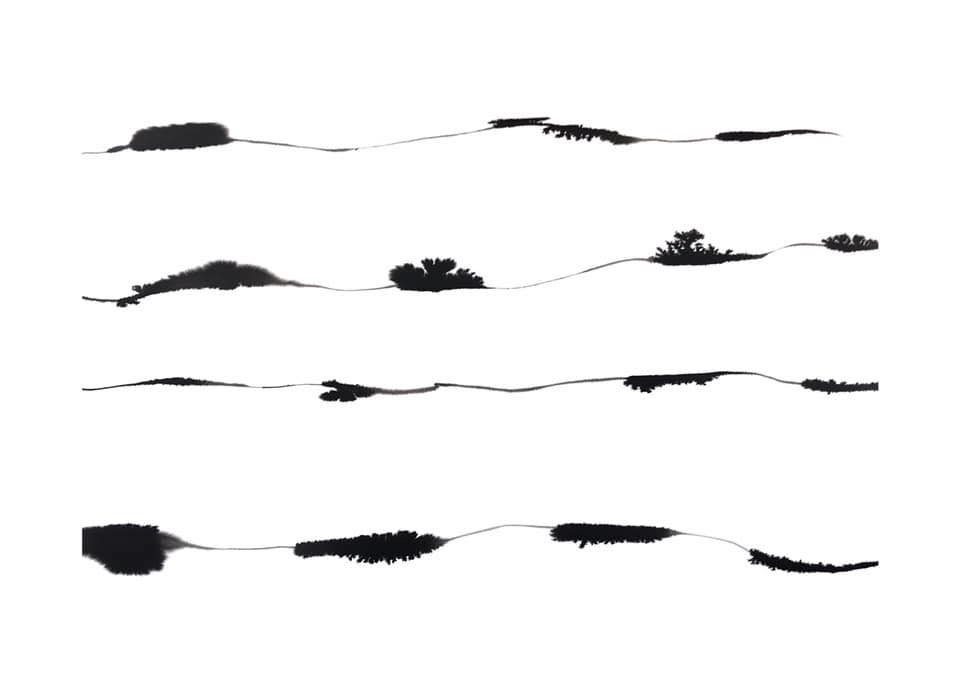Absence‐essence. A glimpse of Serena Poletti’s inner world
With a degree in Pharmacy, Serena Poletti (Pordenone, 1986) gave herself body and soul to art in 2016 when she decided to enroll in the course of painting at the Academy of Fine Arts in Venice. Always attracted by Chinese and Japanese philosophies and arts, she transformed this spontaneous inclination into essential and vivid works which span calligraphy, sculpture, watercolour and Indian ink art on paper.
The study of Sign is the focal point of her work which stems from the reflection on art as an experience of the Void, a philosophical concept existing both in the Taoist Asia and in modern physics (through the ancient Greece).
Serena’s artistic practice is a meticulous exercise of “meditation on paper” where art is one of her means of expression to experience the “Whole”. A vibrant figuration of reality which reveals abstract images condensing macrocosm and microcosm in a single intense manifestation.
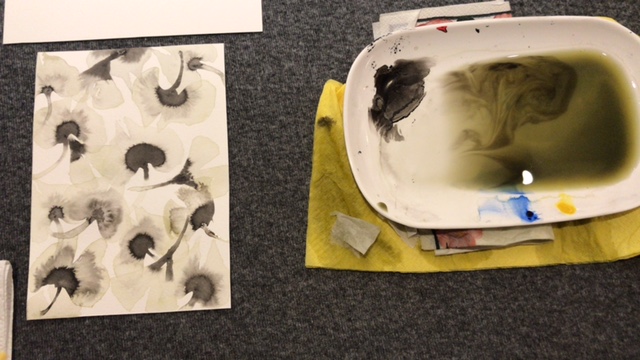
At work with watercolor and ink on paper – Courtesy of Serena Poletti
SpeakART: In your educational path art didn’t arrive immediately. Was there something (a moment, an event, a circumstance) which served as a discriminating factor? What led you to approach art or vice versa?
Serena Poletti: Less mysterious than it seems!
Honestly, I have always been close to art. When I was a girl, I loved drawing and creating small wooden sculptures. My father too – who is a doctor –used to draw organic things with Bic pens; his own vision of the world as a scientist depicted reality like a microbiological entity.
The fact I didn’t enroll immediately in the Academy of Fine Arts ‐ and I opted for the faculty of Pharmacy instead ‐ depended on familiar circumstances which at the time fostered me a more steady employment.
That doesn’t mean science is not part of me as well. Actually, I believe that art and science are two poles of my life matching each other. Studying Pharmacy made me economically independent, a condition which allowed me to step into the field of art with more maturity.
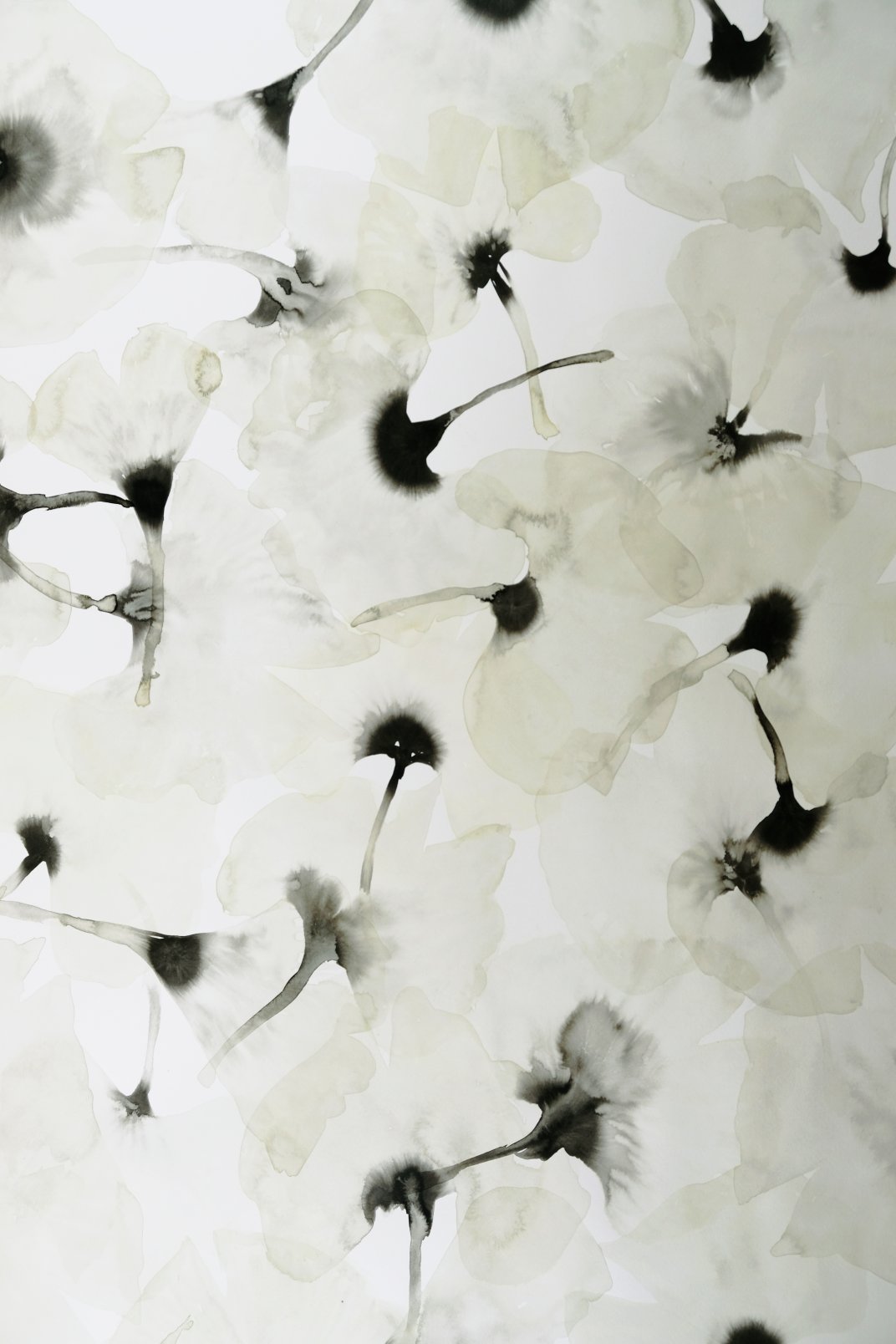
Serena Poletti, “Emptiness”, “Organics” series, watercolor and ink on cotton paper, 100X70cm – Courtesy of Serena Poletti
SpeakART: You are an eclectic artist who challenges herself with various techniques such as engraving, watercolour and Indian ink on paper, calligraphy, sculpture. Is there a single technique that you consider more representative of your own artistic expression? If you had to describe all of them, can you identify different forms of research or there is a common thread?
Serena Poletti:
Selecting one technique only is not easy at all…For example, engraving gave me the opportunity to play with Sign. After all, this is the basis of my expression. In sculpture I love touching the material. What’s more, the idea of creating a tridimensional object ‐ which can convey more levels of experience in the public – is absolutely exciting. In the future I’d like to dedicate myself to a kind of “installative painting” involving sculptural elements as well, even if paper remains my favourite surface.
As a matter of fact, everything I do is the expression of the same thing, that is to say the artistic research on the Void. I’d say that everything has arisen from an unicum which visually expresses itself in different forms.
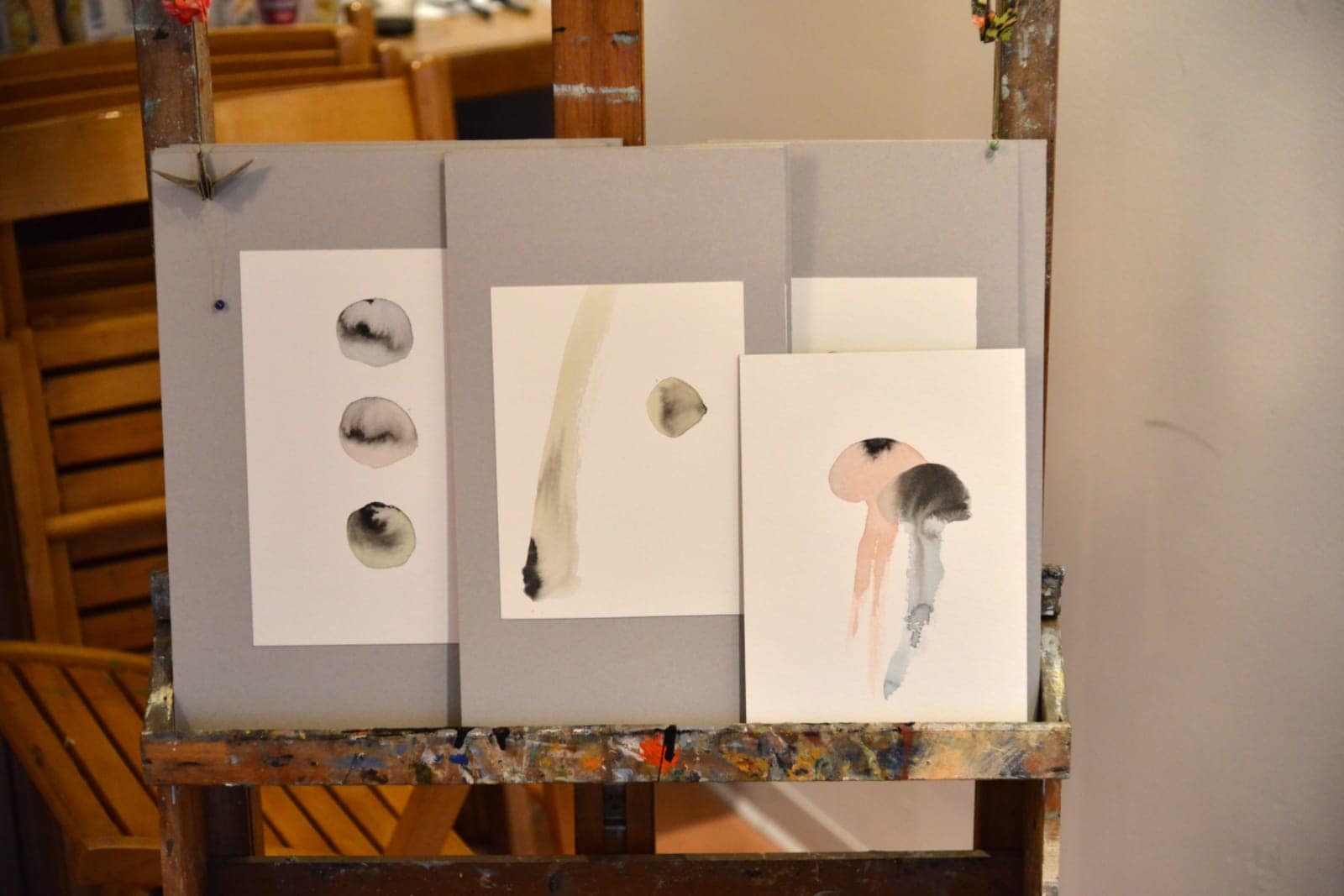
Serena Poletti, selection of inks on paper from the “Organics” series – Courtesy of Serena Poletti
SpeakART: In your artworks the research on the calligraphic Sign corresponds to a certain ritual use of gestures – we suppose. In your biography you mentioned the participation in the “Cleaning the house” workshop by Marina Abramovic Institute. If and how has this experience concretely helped you in terms of artistic practice?
Serena Poletti: This workshop lasted four days and was arranged in the Serifos island in Greece. We were not allowed to speak, read or use digital devices; fast was required. After waking up at dawn, we used to do stretching exercises and yoga to reawaken our bodies. Every day we used to practice different disciplines (each one had specific rules to be followed), the same ones codified by Marina Abramovic over the years such as counting grains of rice or lentils, looking another person in the eyes, slow walks and so on.
These exercises usually lead to experience extreme situations both physically and mentally and make possible the accomplishment of a high self‐consciousness which is the ultimate purpose of all ritual arts, after all.
They allow the conscience to harmoniously agree with the unconscious and to be able unconsciously to detach from oneself and act with instinct and intuition. Intuition understood as the ability to grasp the totality and individuality of all things.
In fact, in my artistic practice the study of Sign requires a form of personal research that this workshop has certainly helped to develop giving me further methods of approach.
At the same time, studying calligraphy concretely helps me find forms of concentration which allow the internalization of movements and facilitate the flow of my art production in the most spontaneous way.
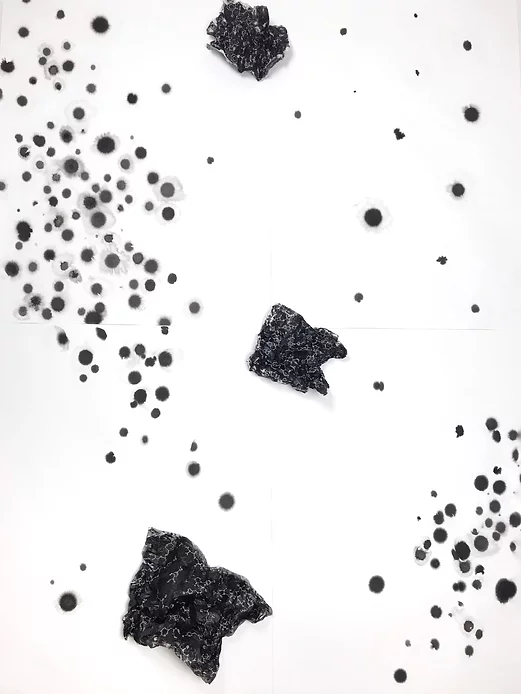
Serena Poletti, “H20 +”, Indian ink on cotton paper and rice paper, 200x140cm, for the exhibition “The blue planet is painted in red”, Science Gallery, Ca’ Foscari University of Venice – Courtesy of Serena Poletti
SpeakART: Your attention to perceptible world and the universe as a catalyst of reflections clearly recalls Taoism. Can you tell us more about the way you approached this philosophy? What about the implications on your art expression?
Serena Poletti: I’m absolutely sure there are some archetypes promoting a natural tendency to a single philosophy. On my part, I was surprised to learn that these strong connections were already in me. Probably, I was posing myself some questions and I just found a possible answer.
If you think about the conception of the Void in Taoism and modern physics, the correspondence is quite evident: both mention a common “space‐moment” – which is the Void ‐ where changes and transformations occur and refer both to universe and humankind. After all, it’s simply a question of life and death. So, basically the Void is the “Whole”. It is us. As you can see, it’s a circular issue which works.
Then I found out that an artist – Fabienne Verdier – had already dealt with these themes. She had studied calligraphy in China for many years and had collaborated with the Vietnamese astrophysicist Trinh Xuan Thuan, who wrote the book “La plénitude du vide”.
I believe that our background is not that important, after all. Whoever you are ‐ an artist, a scientist or a mathematician ‐ the main question is always the same: which is the true nature of our surrounding world? The desire to know the truth and the self is simply part of human nature. Basically, art is a way to achieve it, even if is not the only one. Look at the collaborations between artists and scientists, for instance. This is one of the aspects I’d like to develop in a potential multidisciplinary project in the next future.
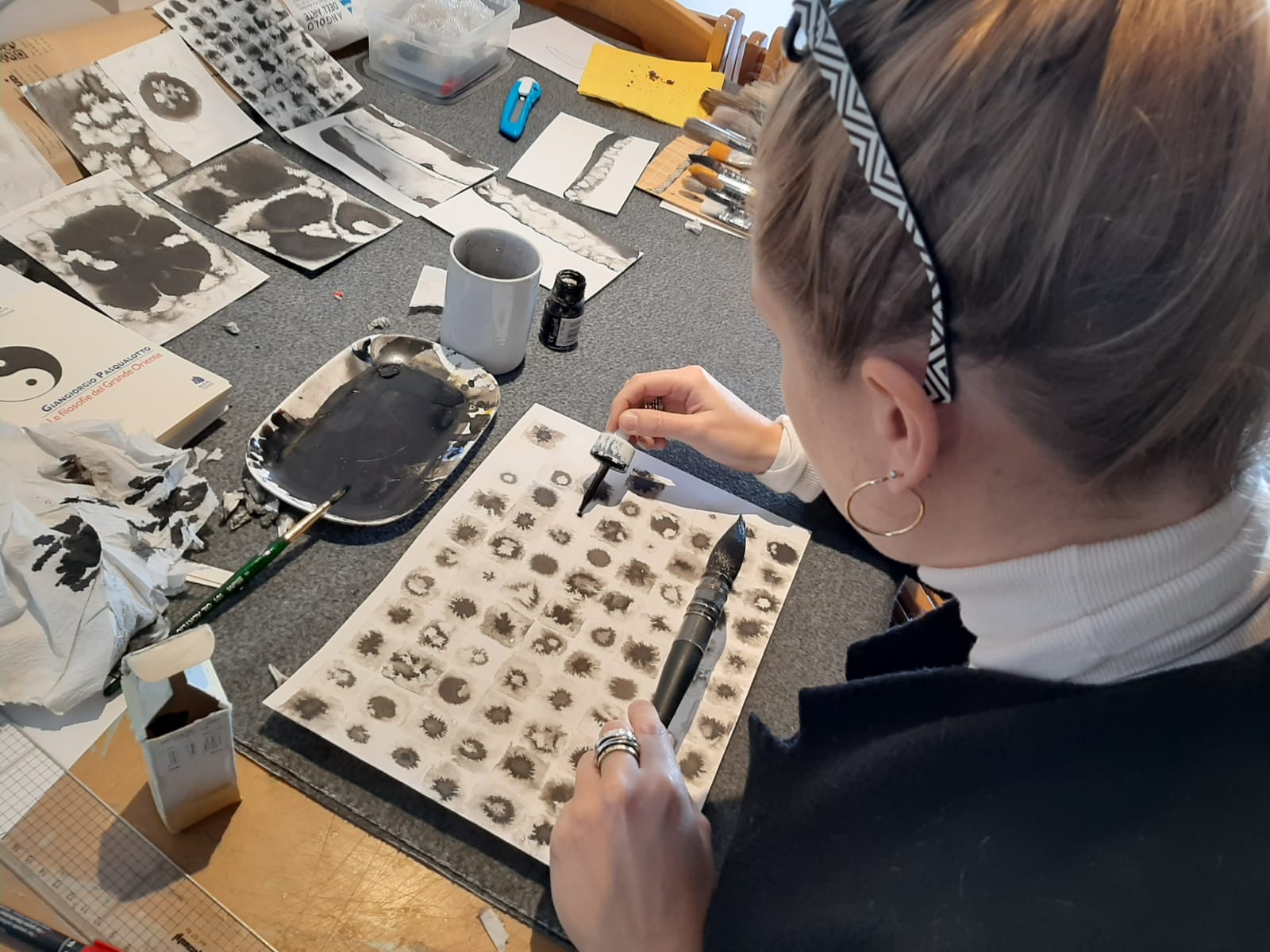
Serena Poletti at work in Claudia Corò’s Giudecca Art Space (Venice) – Courtesy of Serena Poletti
SpeakART: In your biography there are some places which have had a great influence on you such as Greece. In an imaginary list where would you put Venice, the city you chose to live and work?
Serena Poletti: As of now, Venice is my magic world, a place where I feel free to express myself. I particularly love being close to the water which it’s very important because it inspires me a sense of inner calm.
Personally, I’m a fickle human being…in a way, I need to find different “shelters” in the world to get different motivations. Certainly, Venice is not an arrival point but now, in contrast to the past, I prefer to create some professional opportunity for a relocation before deciding to move.
What’s more, I consider myself very lucky because I have the Orient just a stone’s throw from my house. In fact, Padua is the city where the well‐known master Nagayama lives and his pupil Beatrice Testini is among the few in Europe to possess a very high expertise in the art of calligraphy, (IV Dan of the Japan Educational Calligraphy of Tokyo) so, when I have enough time, I usually take lessons from them as well.
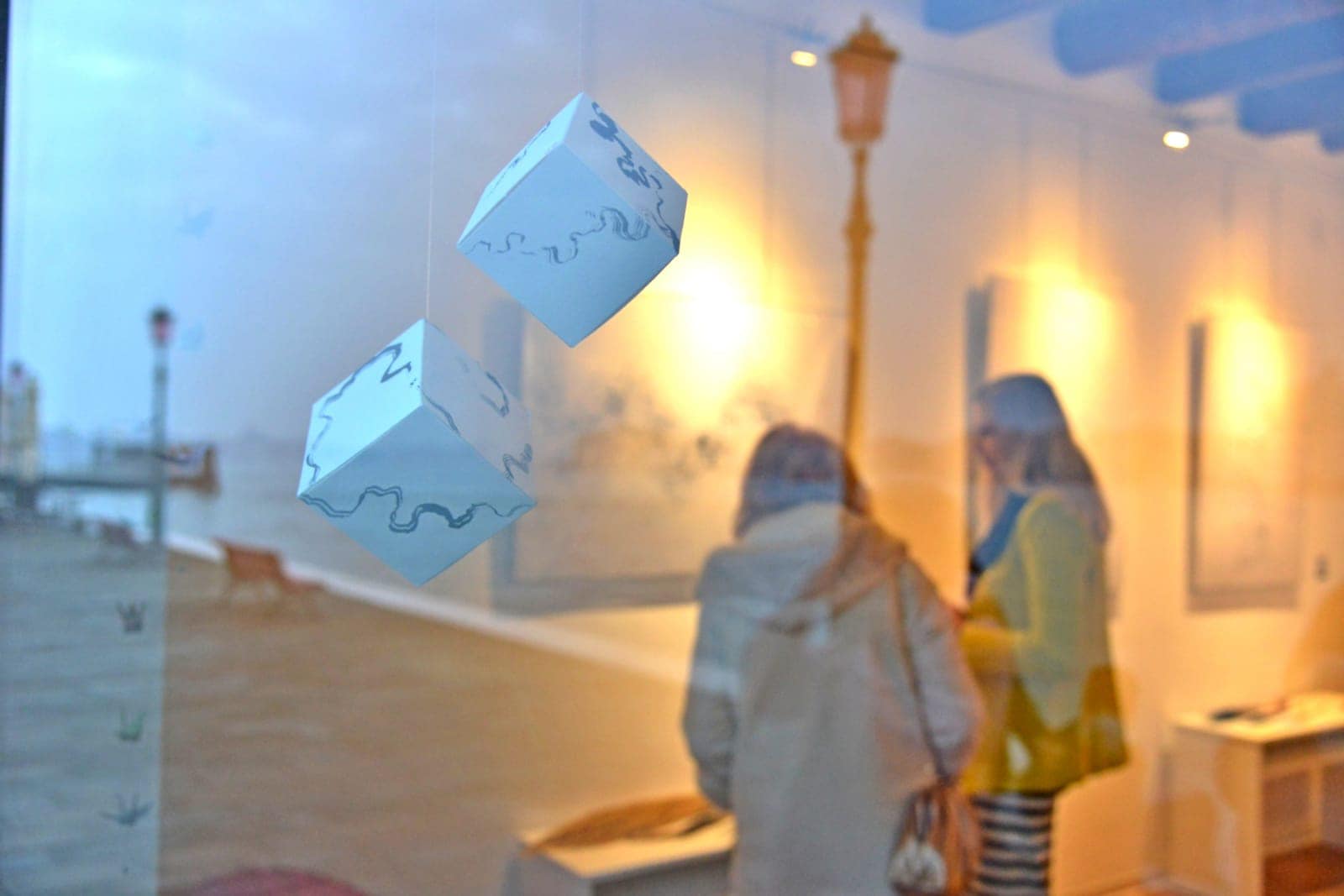
Serena Poletti, calligraphic sign on paper cube, 10x10cm, 2021 – Courtesy of Serena Poletti
SpeakART: Can you tell us something about a potential project you would like to develop or a current one?
Serena Poletti: At the moment I’m dealing with a project on the theme of soil related to the massacre of olive trees in Puglia caused by Xylella bacterium which infected centuries‐old plants that unfortunately have been uprooted. I thought to conceive a sculptural installation in memory of these trees starting from tracing their trunks. Now I’m carrying out a research in terms of materials: at the beginning I had thought to use sheet metal, but there were problems of availability, so I’m opting for paper instead.
I have many ideas for the future…the context of theater (in particular, Pina Bausch’s school) has always interested me. It would be beautiful to build up a scenography or conceive a work of art in combination with a contemporary dance performance.
Certainly, the study of human body is another aspect which has always attracted me. In the past I participated in a workshop of Butō dance with teacher Yumiko Yoshioka, a practice which focuses on body resonance. For years I have been thinking of pushing myself in this direction, but this idea still coexists with the fear of exposing myself in public. A work of art allows me to “filter” my presence, instead in a performance I should bare myself completely. I’m pretty sure it will come a moment when I’ll be ready to do it. Now it’s still too early.
